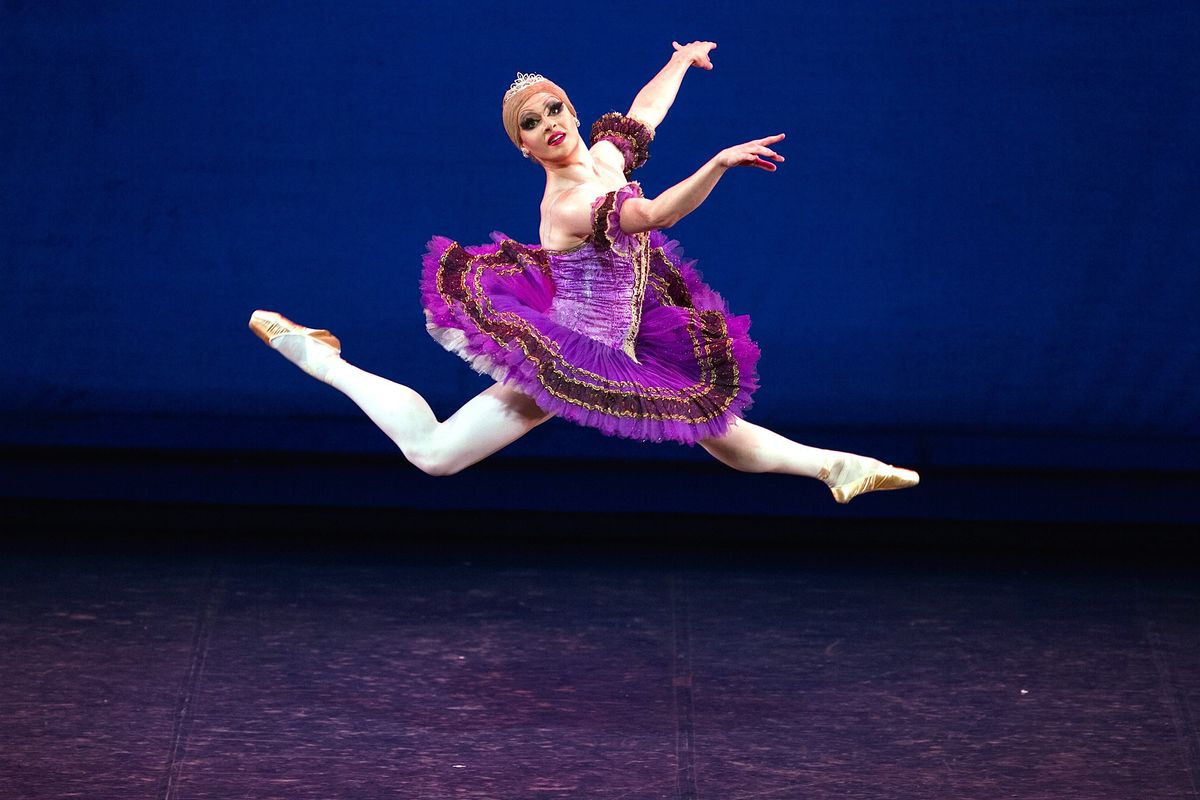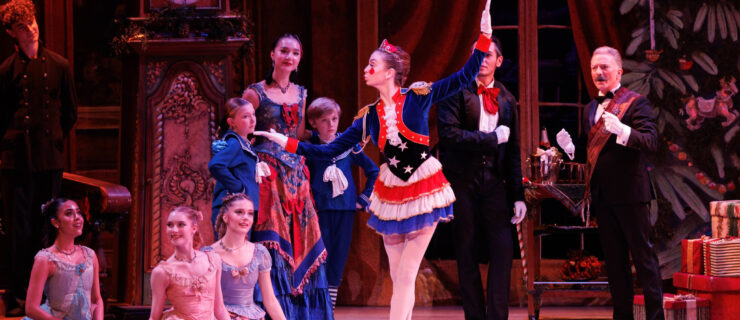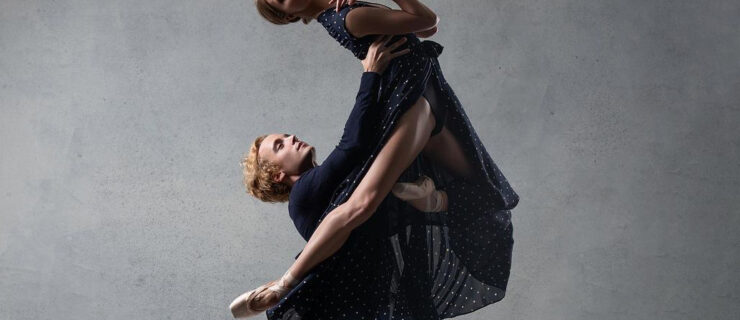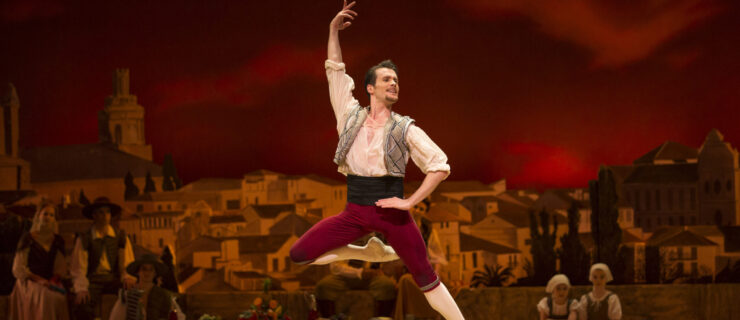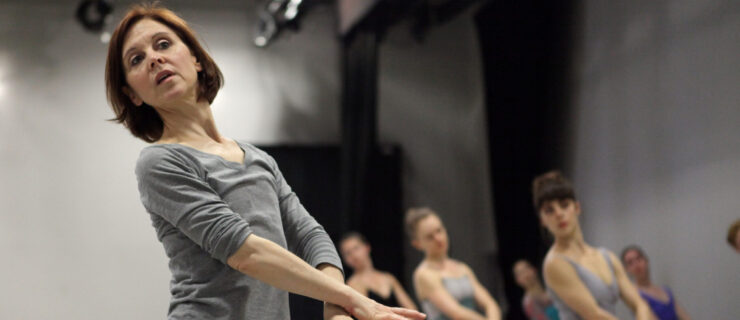The Trocks' Philip Martin-Nielson on Finding His Voice Through Ballet and Combating His Autism
This story originally appeared in the December 2015/January 2016 issue of
Pointe.
Not every male dancer gets to take on roles like Swan Lake‘s Odette, and Giannina in a restaging of Jules Perrot’s The Naïad and the Fisherman. But Philip Martin-Nielson isn’t your typical performer.
Martin-Nielson is a leading dancer with Les Ballets Trockadero de Monte Carlo, the all-male troupe famous for its parodies of traditional ballets. Quite an accomplishment for someone who was once told he would never be capable of taking care of himself or living on his own.
Although you’d never know it by talking to him or watching him dance, Martin-Nielson has one of the most severe forms of autism. Diagnosed at age 3, he was unable to maintain eye contact or communicate and couldn’t bear to be touched.
But as he memorized and performed the dances he saw on “Barney and Friends,” he discovered that he could express himself through dance. After years of him begging, his mother signed him up for his first ballet class at age 6.
 Philip-Nielson with the rest of the Trocks. Photo by Zoran Jelenic, Courtesy Les Ballets Trockadero de Monte Carlo.
Philip-Nielson with the rest of the Trocks. Photo by Zoran Jelenic, Courtesy Les Ballets Trockadero de Monte Carlo.
His focus and attention during classes were qualities his mother had never seen before. She knew this was something he had to keep doing. With the help of his teachers, Martin-Nielson learned to carry the discipline he had acquired from ballet over into his academics and day-to-day life. His speech, reading and social skills improved dramatically, and he learned various social cues through movement and observing others in the studio.
“I was always teased and bullied for being different,” Martin-Nielson says. “But, when I was in a ballet class, the bullying, the teasing, the hurt feelings, none of that mattered.”
Teachers at his hometown dance studio in Cornwall, New York, thought his slight build, expressive presence and comedic flair were a perfect fit for the Trocks, so they introduced him to pointe at age 12.
 Martin-Nielson as Kravlji Snepek, his Trocks’ danseur persona. Photo by Zoran Jelenic, Courtesy Les Ballets Trockadero de Monte Carlo.
Martin-Nielson as Kravlji Snepek, his Trocks’ danseur persona. Photo by Zoran Jelenic, Courtesy Les Ballets Trockadero de Monte Carlo.
It was Halloween, Martin-Nielson recalls. Armed with a pair of pointe shoes and a tutu, he walked into his first pointe class. “If you fall, you’re taking the shoes off,” his teacher warned.
But Martin-Nielson didn’t fall. Rather, he took to pointework right away. Years later, when he transferred to the School of American Ballet (where pointe is not offered for men), he would practice in his dorm room.
When he was 17, he auditioned for Trockadero. “I wanted to hire him immediately,” says Paul Ghiselin, the troupe’s ballet master. “He just has this natural ability and talent. He really pushes the vocabulary of ballet to its ultimate.”
The Trocks don’t hire dancers who haven’t finished high school, but they encouraged Martin-Nielson to come back once he graduated. He did, and officially signed on with them in September 2012. Now 21, he’s the youngest member of the company.
“The Trocks have given me some wonderful opportunities I never thought I would be able to experience,” Martin-Nielson says. Besides the chance to dance classical roles, he’s had the opportunity to travel, since the company performs all over the world.
Martin-Nielson hopes sharing his story will promote awareness of dance as a therapy for autism, so others like him can achieve their goals and realize their dreams. “If you have a passion, keep going for it and keep doing it to the best of your ability,” he says. “No matter how many times somebody tries to shut you down.”
Fun Facts
Pre-performance ritual:
“Making sure my pointe shoes are clean and nice, and putting Band-Aids around the ribbons so they don’t come undone.”
Hidden talent:
“I’m a costume designer. I can make anything out of any piece of fabric. And I love to do drag performances in the city!”
Guilty pleasure:
“Watching Carol Channing.”
Dream role:
“Kitri in Don Quixote. And it’s a role that I’m already working on in rehearsals.”
